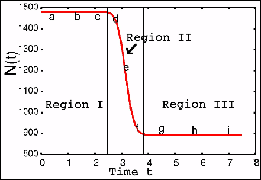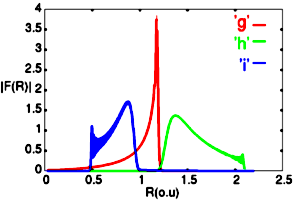Theoretical analysis toward manipulation of Bose-Einstein condensates
Department of Applied Physics and Chemistry
Professor Shinichi WATANABE
shin@pc.uec.ac.jp
http://power1.uec.ac.jp/



| The so-called attractive BEC is formed by atoms that experience an effectively attractive two-body interaction. This type of BEC in a magneto-optical trap becomes unstable and undergoes decay when the number of atoms exceed a critical number. We visualize its transient process using the hyperspherical effective potential. The figure above on the left shows the number of atoms (abscissa) in a BEC as a function of time (ordinate). There is a decline in the number at around t=2 [oscillator unit]. On the right are snap shots of the BEC wave packet as a function of size R of the BEC. `g', `h', and `i' correspond to the times indicated by the same indices. |
Years passed since the dramatic demonstration of the Bose-Einstein condensation (BEC) formed of gaseous alkali atoms within a magneto-optical trap. Atom chip techniques are now developed to form and manipulate a BEC using electric wires that control the magnetic fields for guiding atoms. Our interest is in developing techniques for numerically analyzing the BEC properties as well as its applications.
The figure on the right is the effective hyperspherical potential surface for describing the motion of a BEC consisting of two components such that atoms in each component interact via attractive two-particle potential. The wave packet falls toward (R1=0, R2=0), and then leaves the trap due to recombination following a three-body collision.
